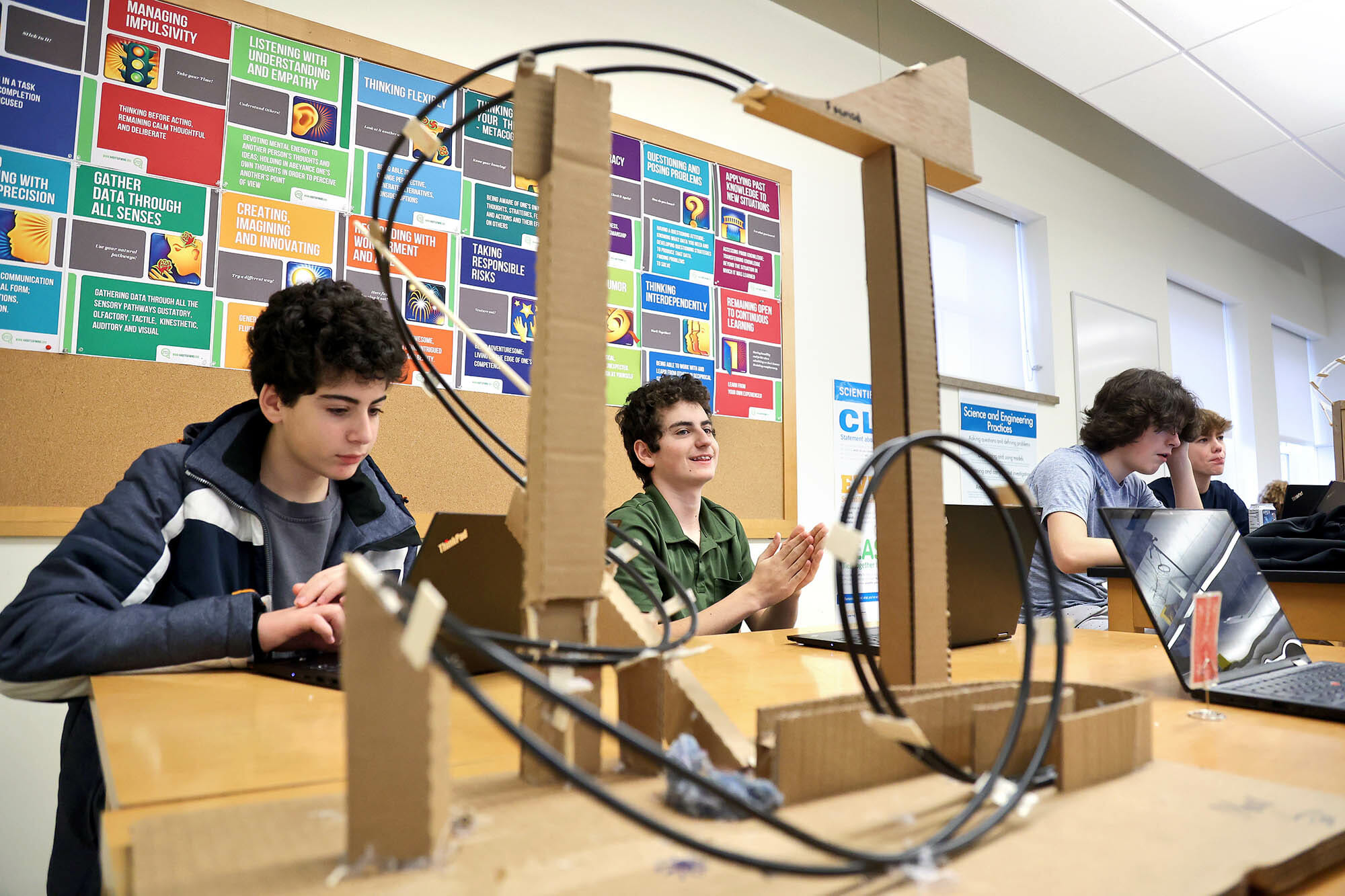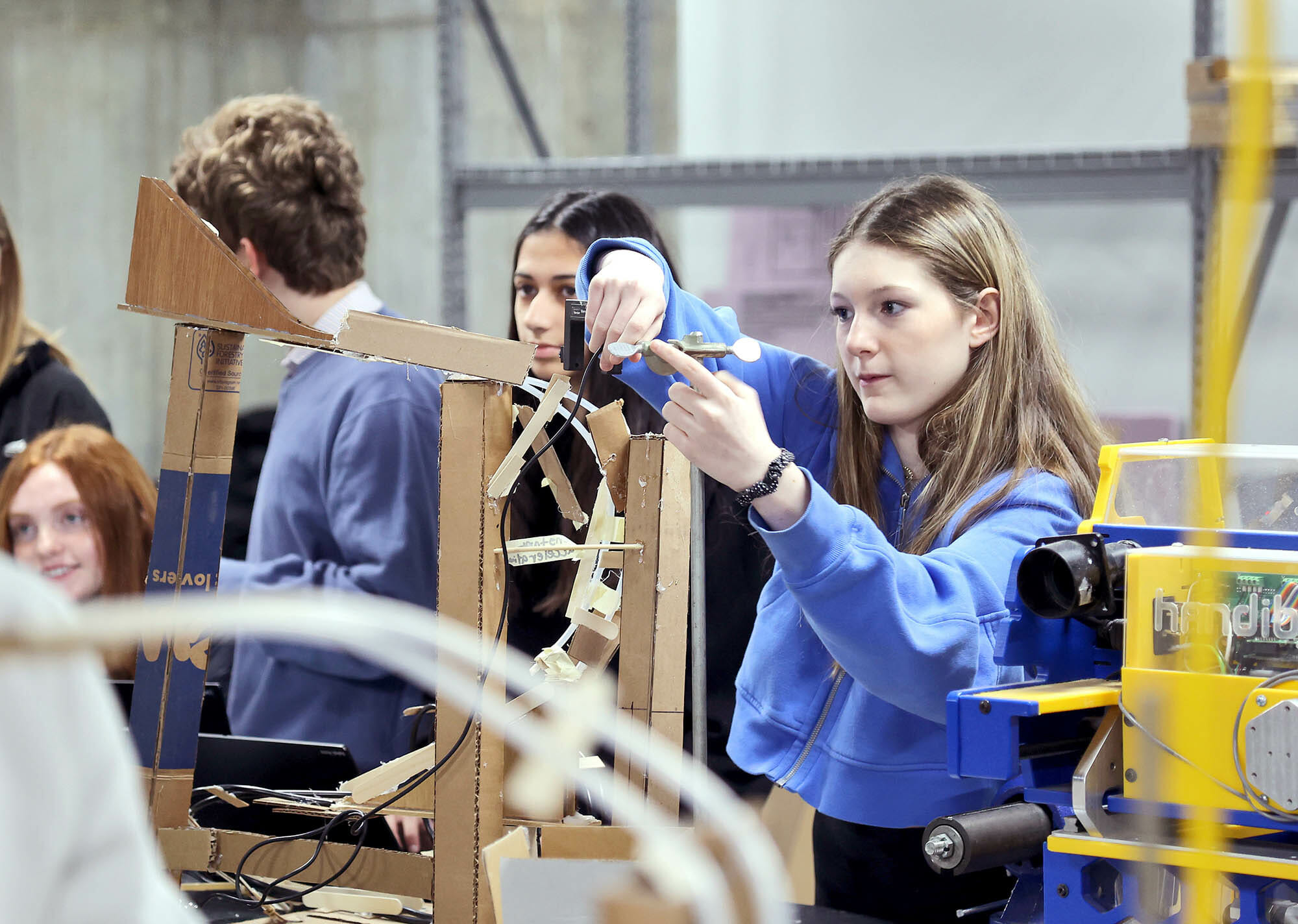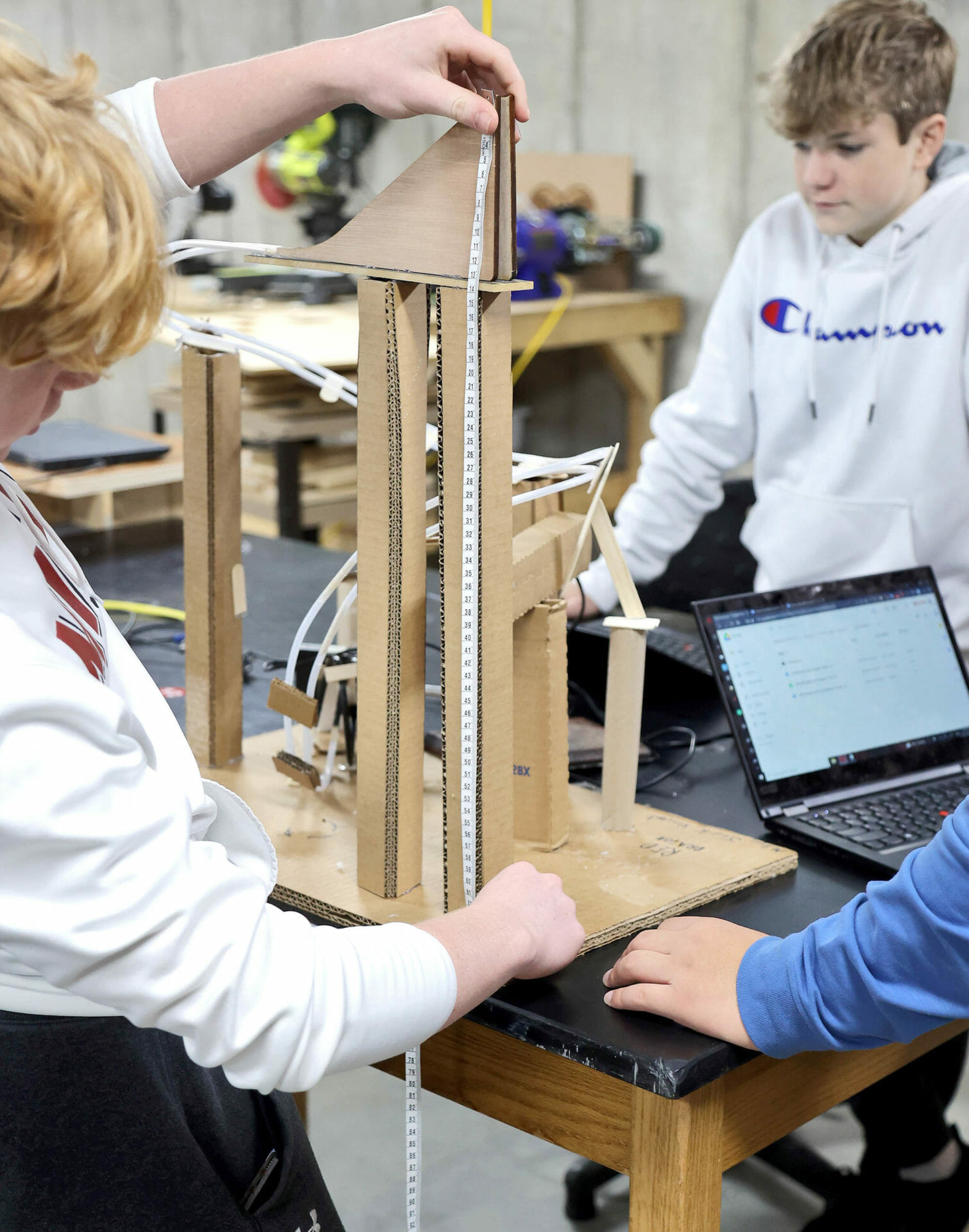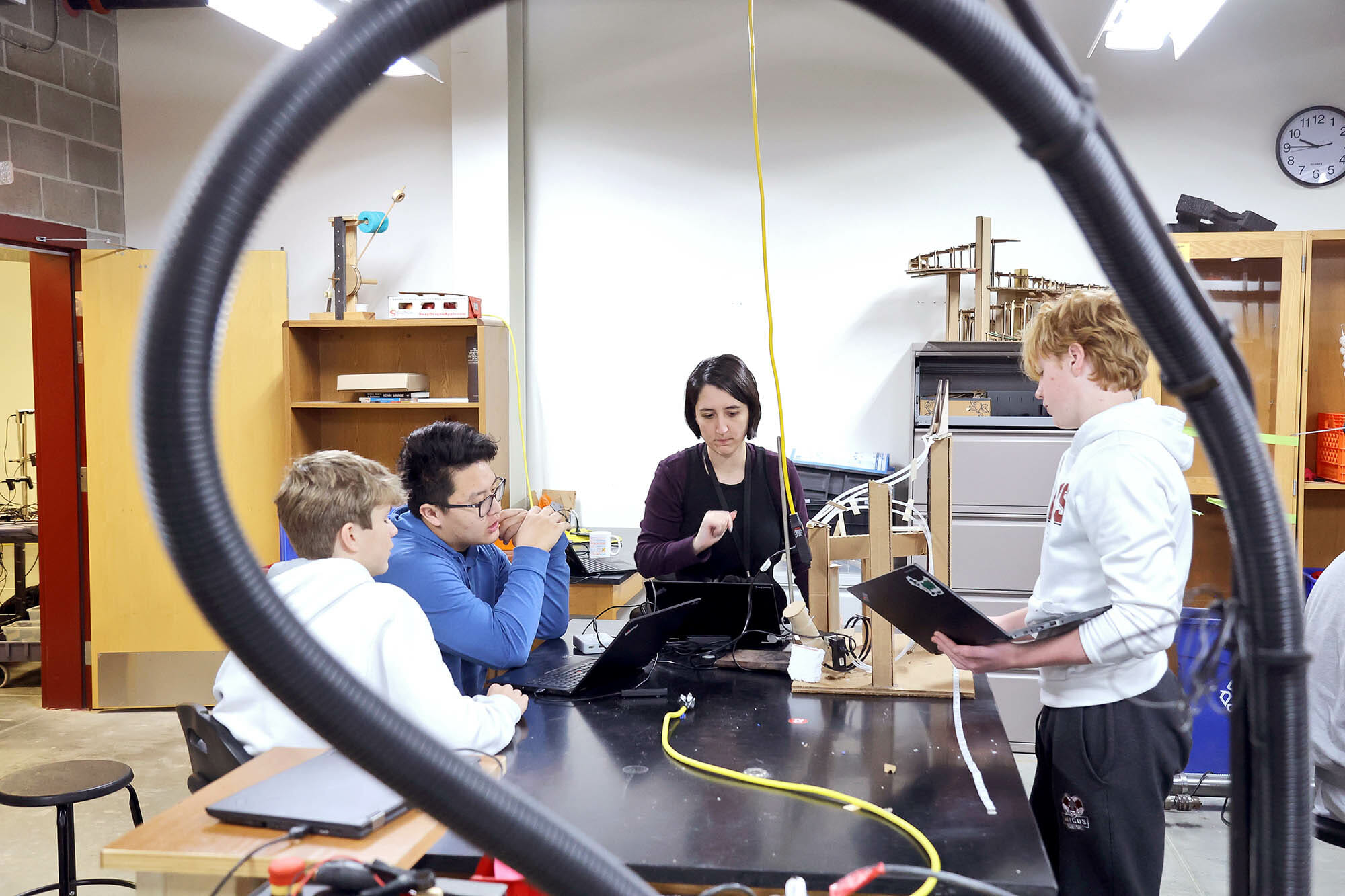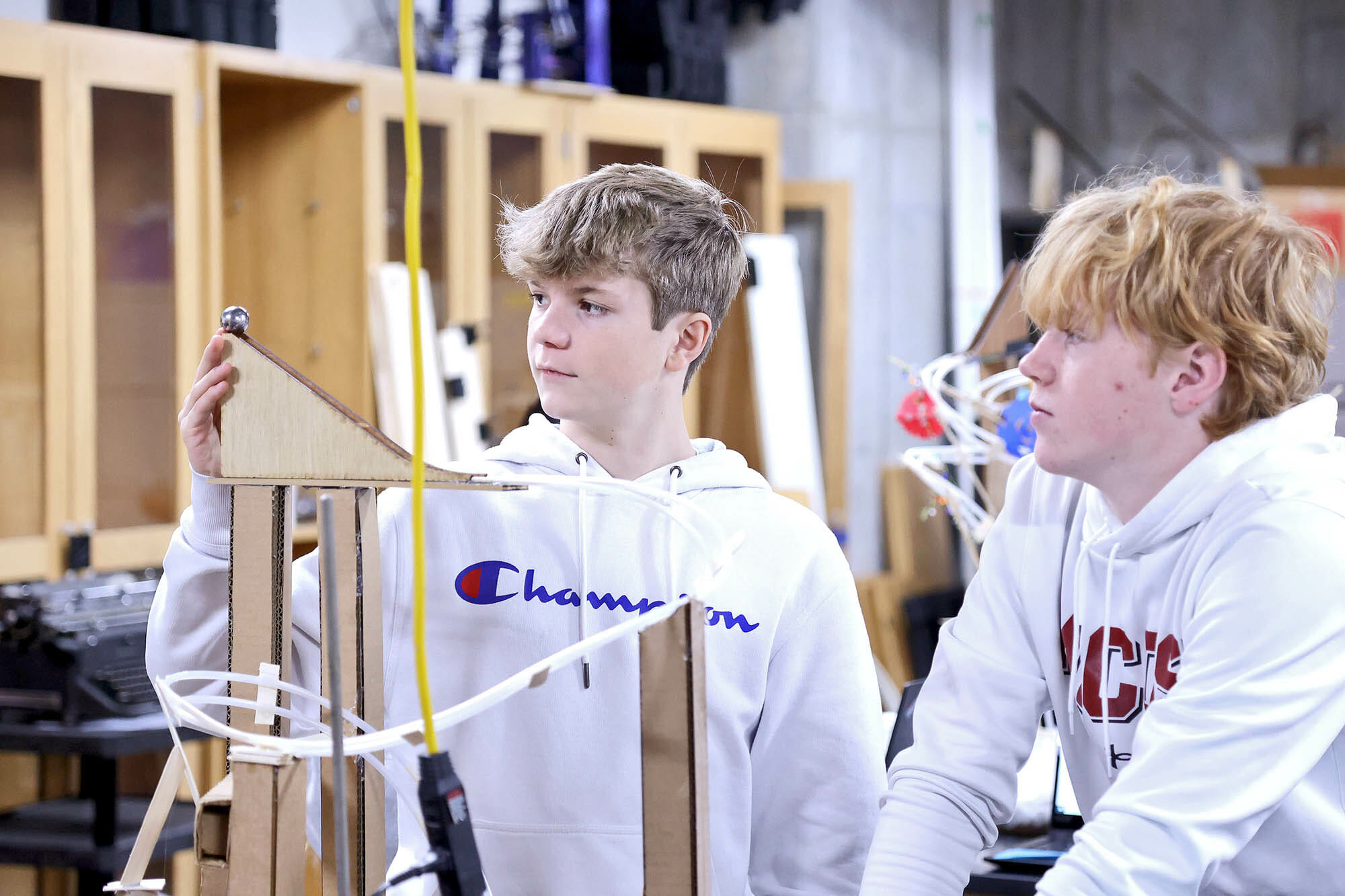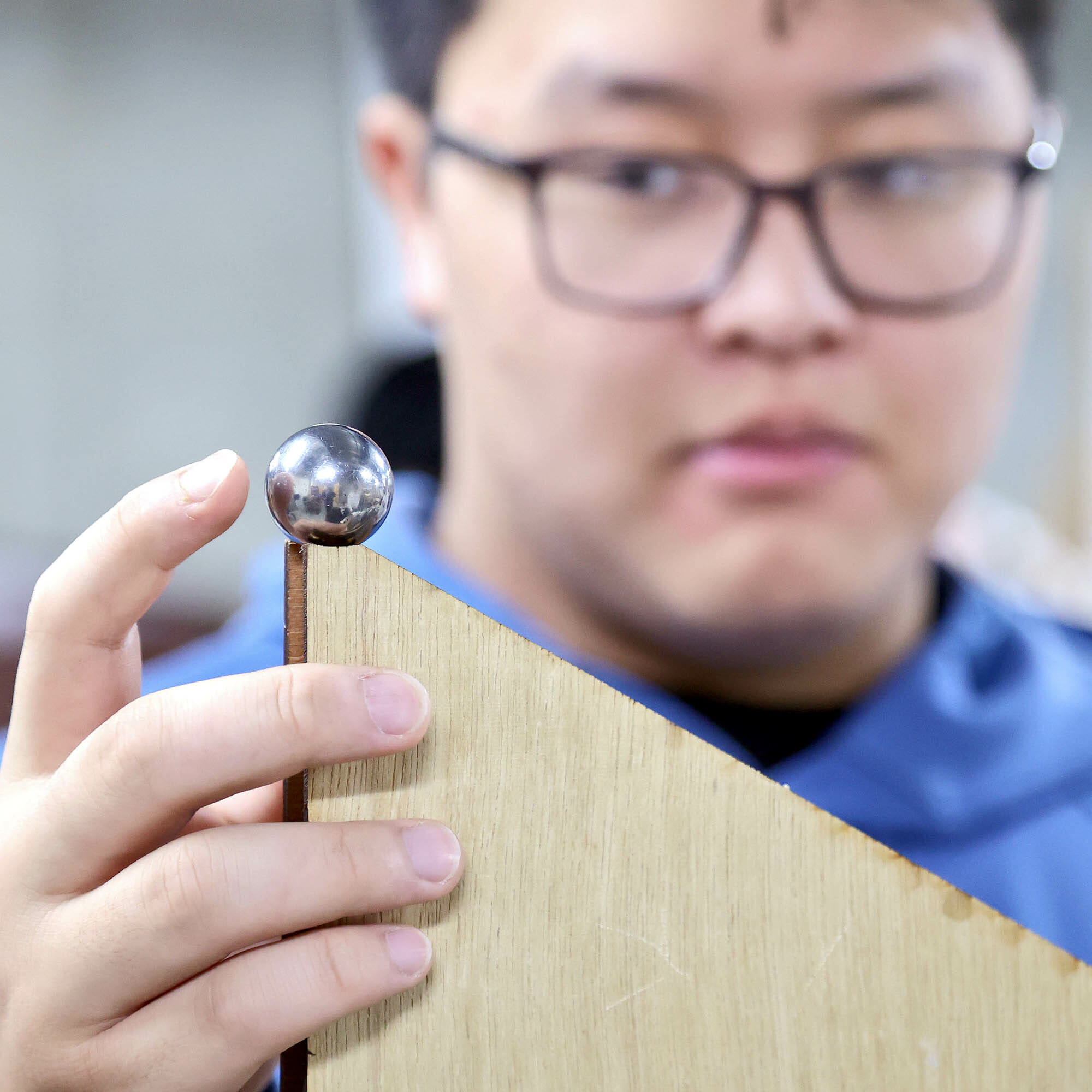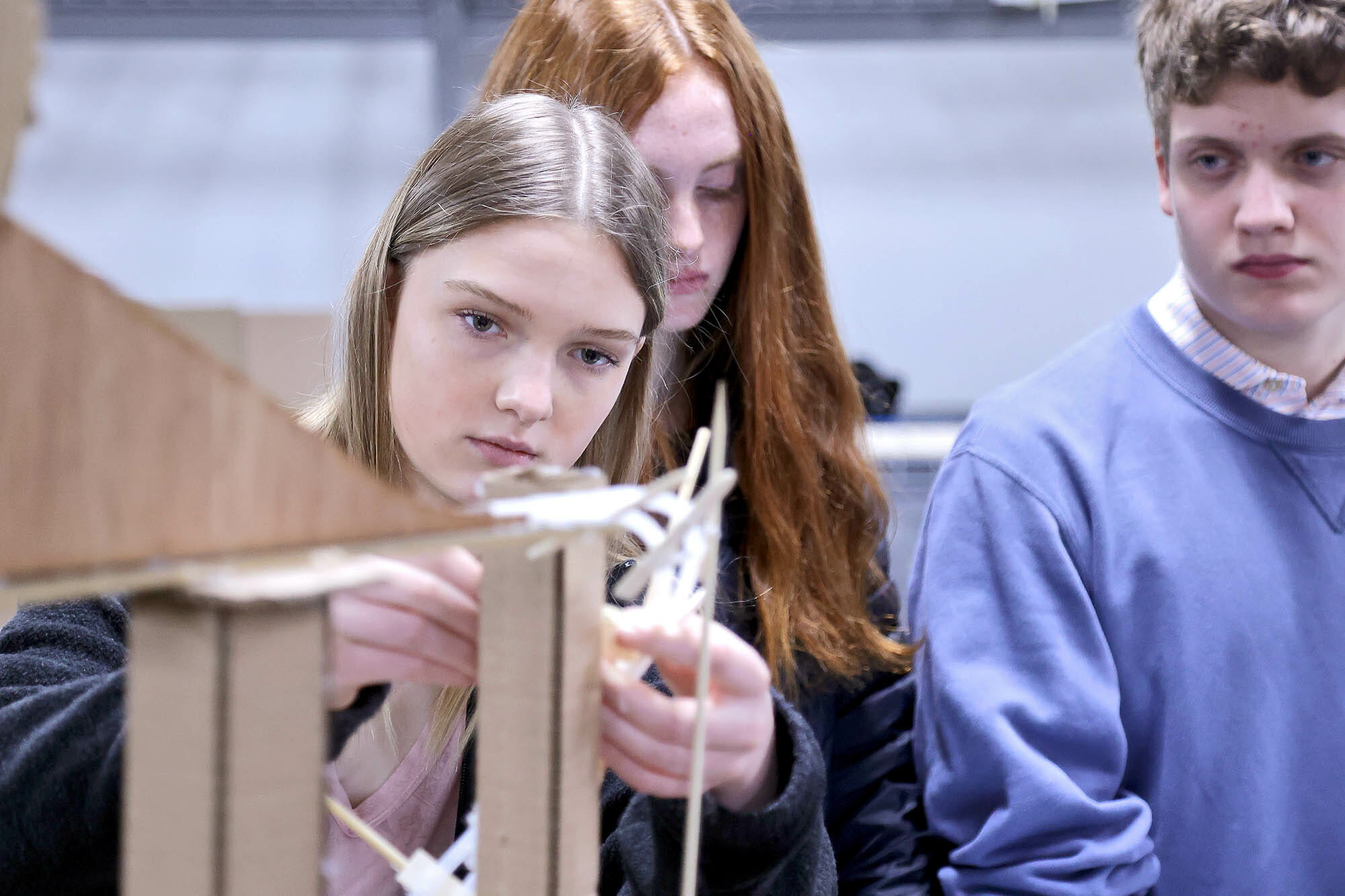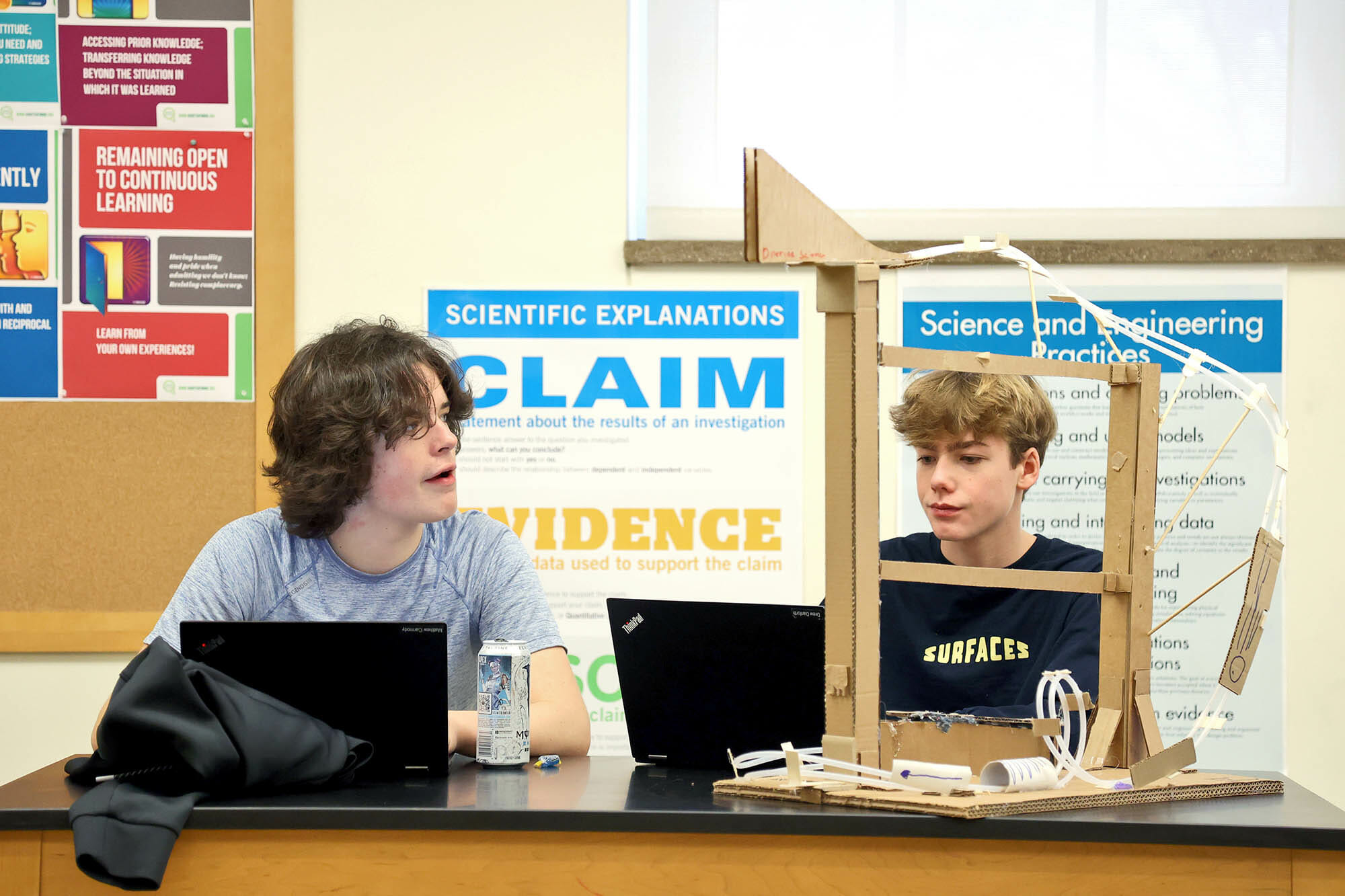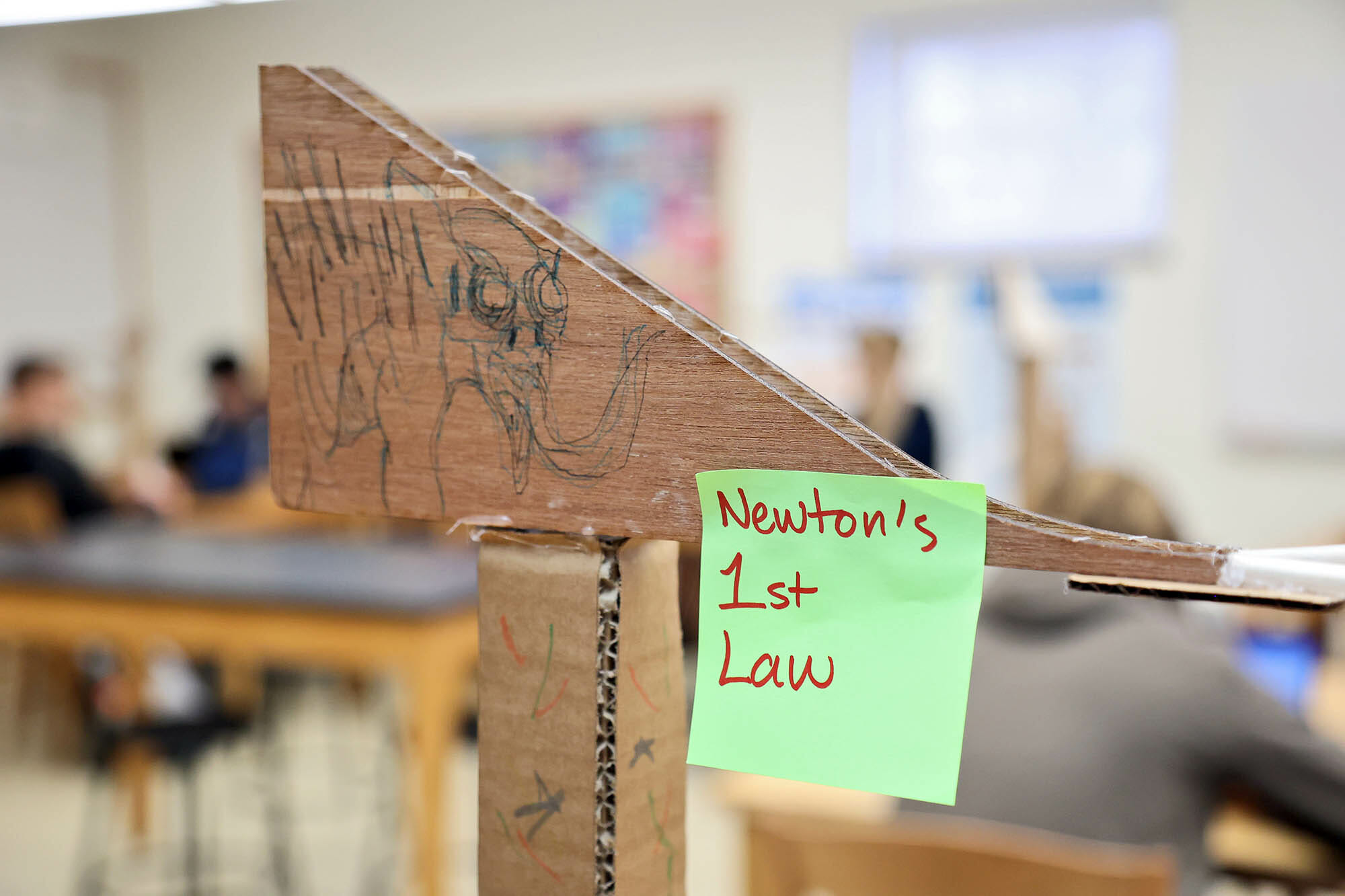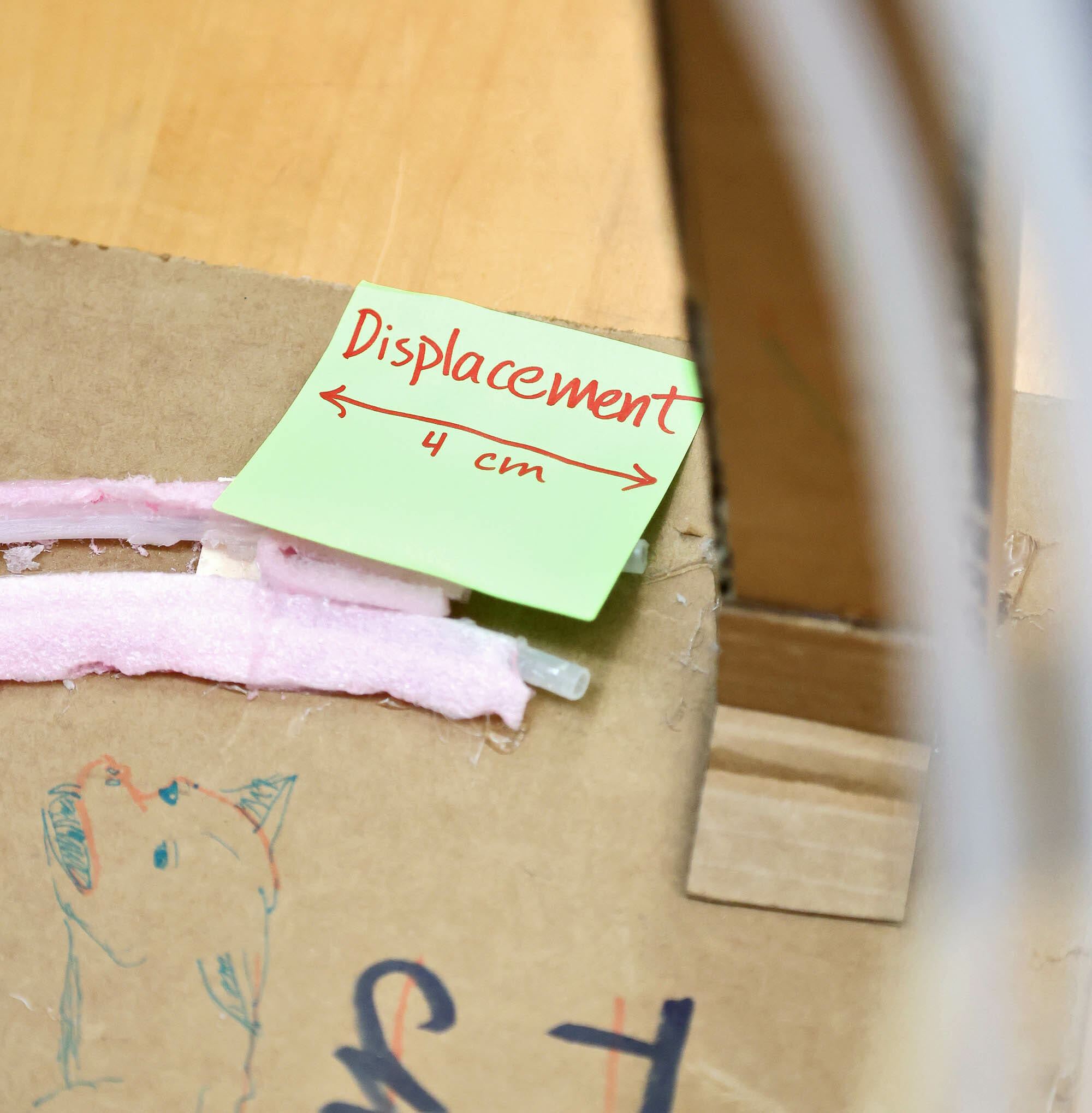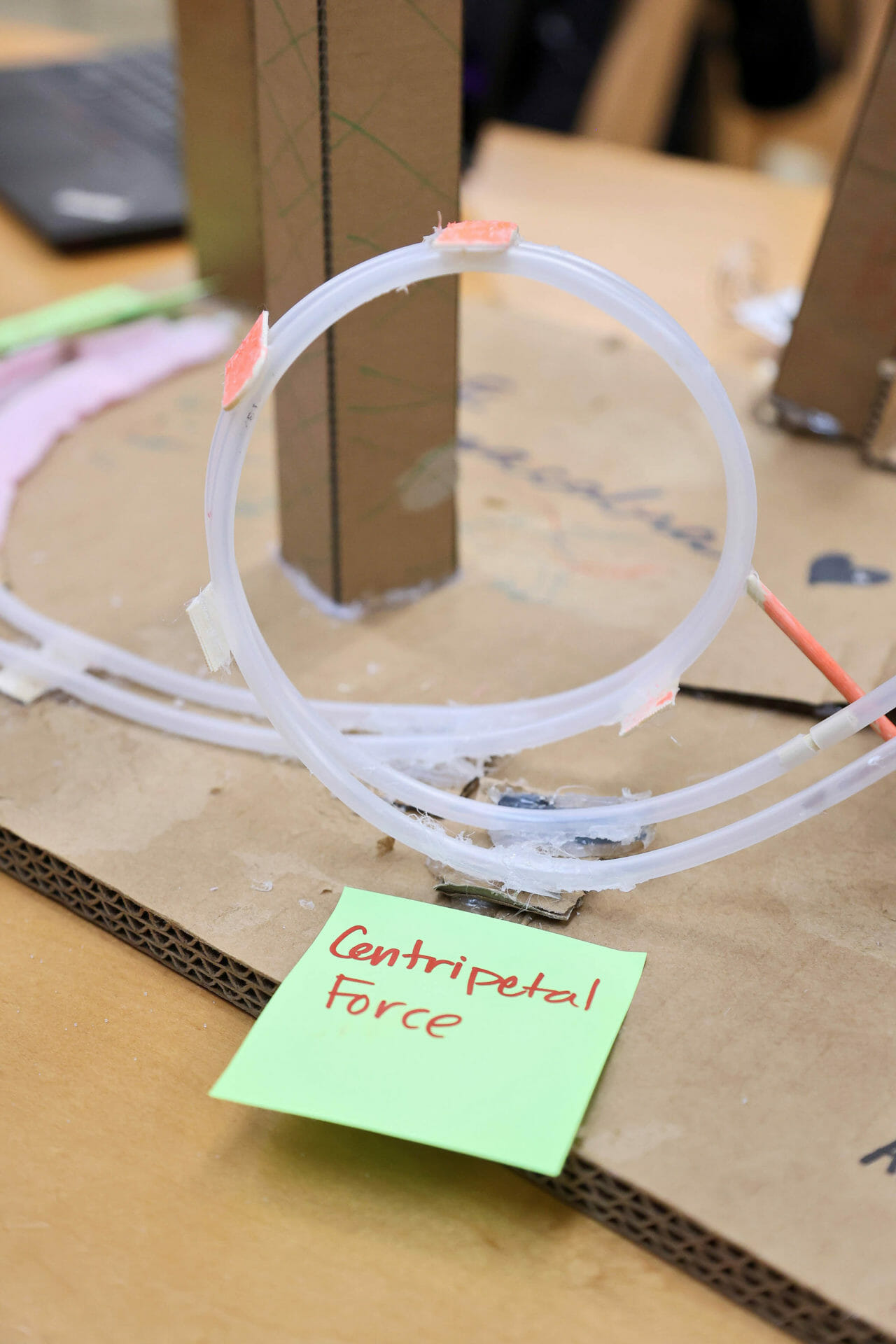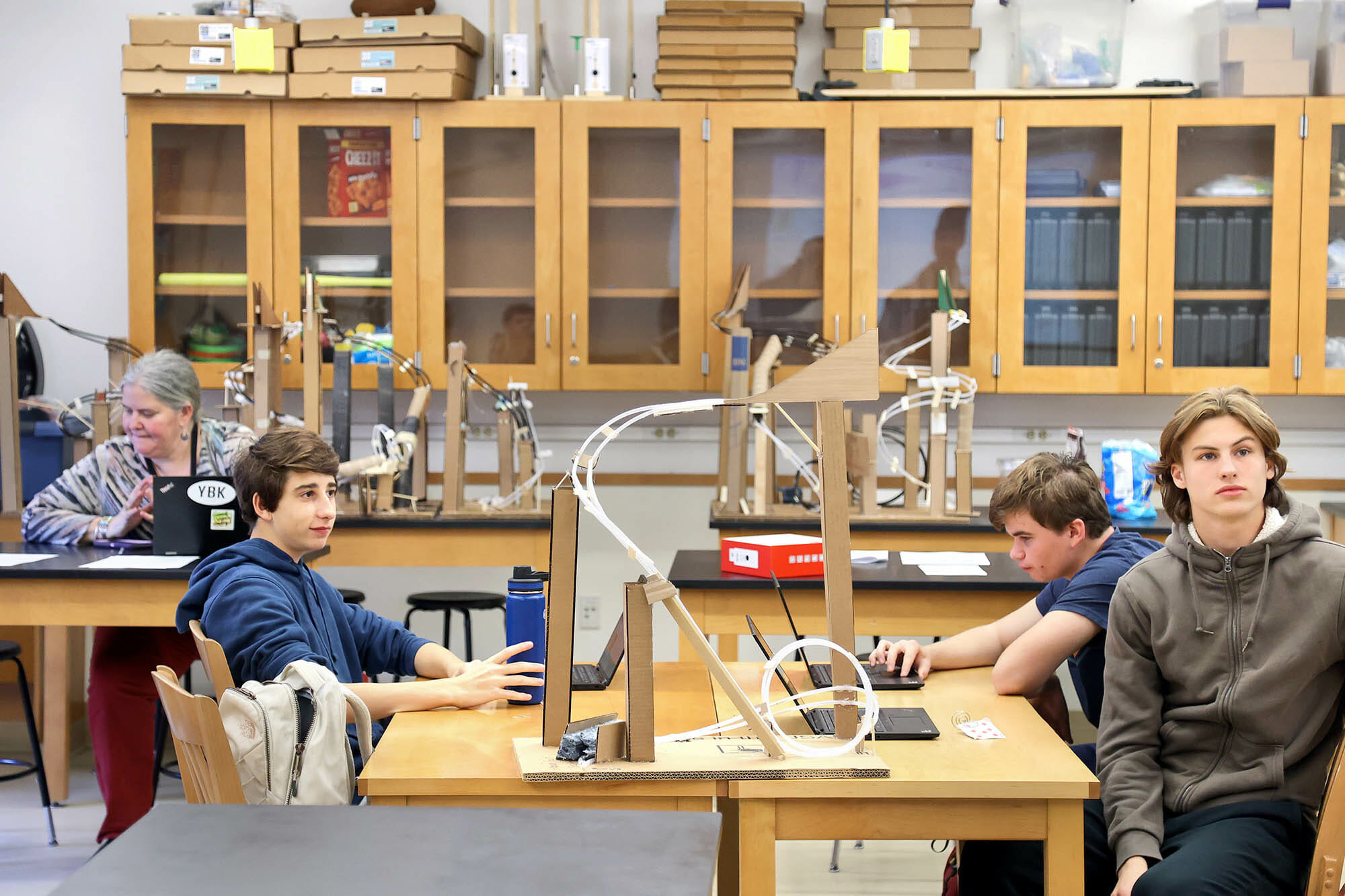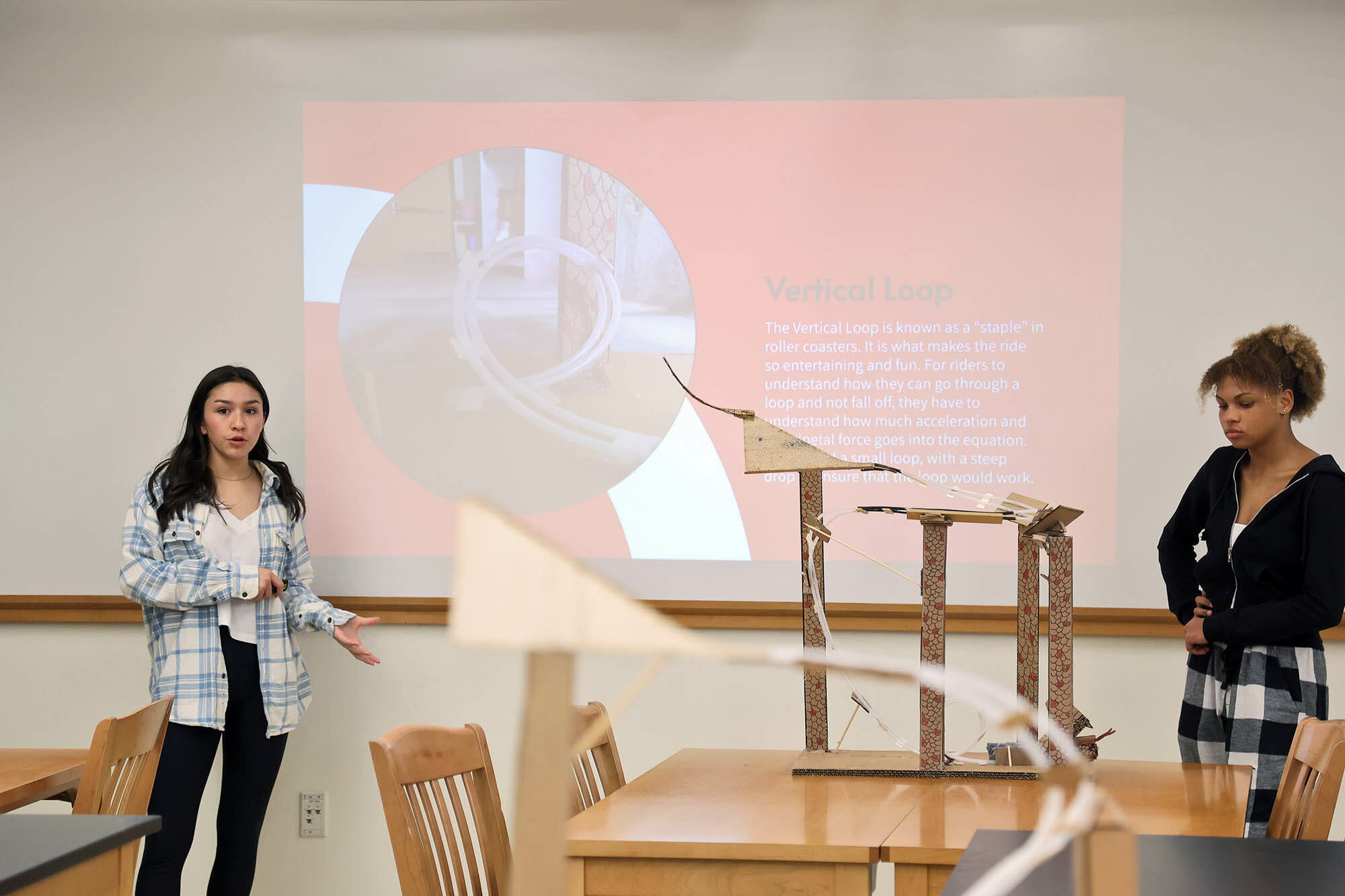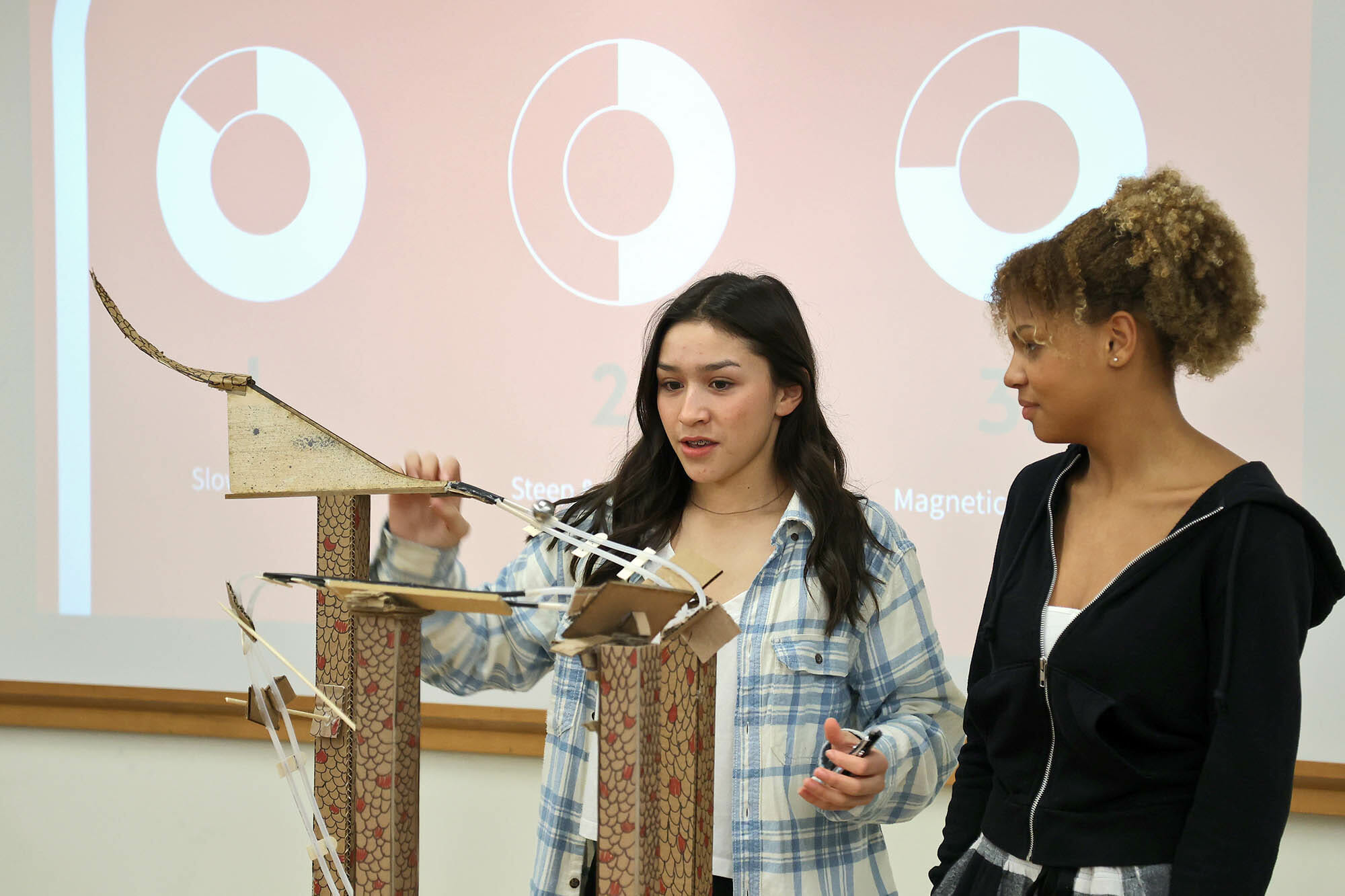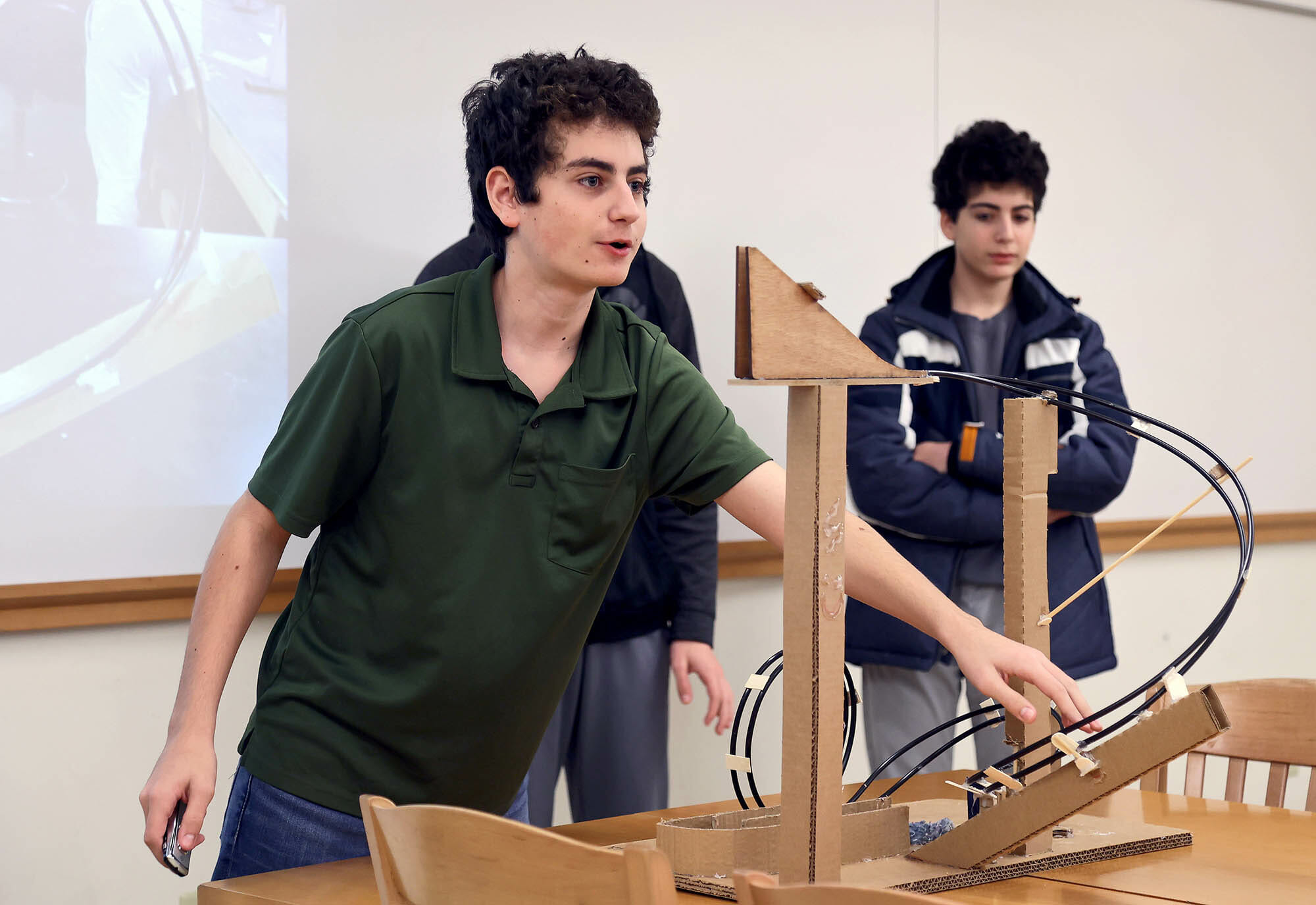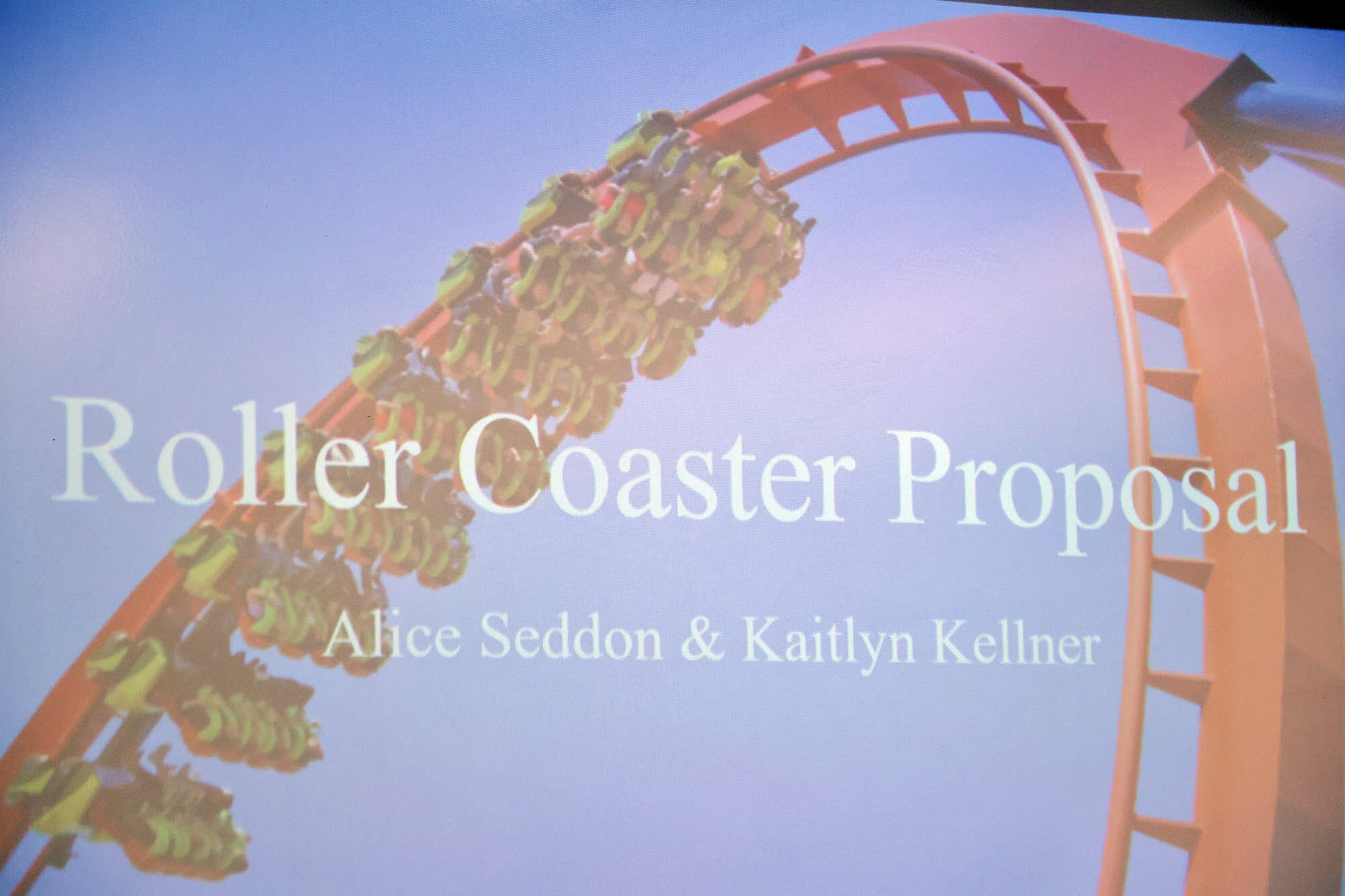The physics wheels are turning for ninth-grade science students. They have been learning about various topics such as velocity, acceleration, force, momentum, and energy, culminating in a roller coaster design simulation. The fictitious scenario stated that Six Flags recently acquired 30 acres next to the park to build a new coaster to educate riders about physics. Students assumed the persona of a roller coaster engineer working for one of six engineering companies with the opportunity to develop a proposal for constructing the new coaster.
In groups of three, each student had a specific role: recording specialist, science specialist, and data specialist. While the three partners worked together on the construction of the roller coaster using resources in the makerspace, each person was responsible for a different aspect. The recording specialist kept a daily log of the group’s activities, construction progress, challenges, successes, and action items for the next day. The data specialist logged the number of items used in the coaster, including length or mass, organized the data on a spreadsheet to calculate materials and cost, and gathered all other data points for energy and velocity calculations. Finally, the science specialist ensured that all the required physics elements were incorporated into the project.
After approximately three weeks of construction, groups gathered data from the project to create a pitch to earn funding from an investment group backing the coaster construction project. Faculty volunteers served as the Six Flags executives who evaluated their pitches.
Students rolled out their thoughts on the project:
- Morgan Macam ’26 liked finally applying physics concepts with creative imagination. She said, « I love building/constructing things and using my knowledge when problem-solving–which there was a lot of. The whole process was constant trial and error and changing your roller coaster until it was able to work. With that said, one of the biggest challenges we faced was the banking aspect of the roller coaster. Our group spent many days trying to figure out the correct angles and positions in which the tubes had to be in order to create the maximal centripetal force. Another thing I loved about the project was that the project wasn’t like any other ‘final assessment.’ It was a time when we could relax and have fun using our creative brains. I was the data specialist in my group, which meant that I got to keep track of all the materials we used, and the final cost of the coaster. One of my favorite parts was hearing all of the group’s presentations; it was similar to a Shark Tank pitch, where judges analyzed the cost, structure, and presentation skills. After all the presentations, we got to smash our rollercoaster, which was a great stress relief during finals week. »
- James Snyder ’26 enjoyed getting to use the knowledge he gained in science and spending time with friends. He said, « Something that was challenging was having to persevere around the fact that the hot glue would not stick to the cardboard. What surprised me during this project was how well our roller coaster turned out. While we might not have finished, the progress we made was more than I expected. This project deepened my understanding of physics because it showed me how these factors are used in the real world and how forces are used in everyday life. »
- Taylor Nuzum ’26 appreciated the freedom to make a roller coaster unique to the students’ imaginations. She said, « I loved to see how every coaster was different, and it was clear how much work each group put into it. For me, the most challenging aspect of the project was working through mistakes. It was difficult to determine why the coaster was functional one day and then immediately non-functional the next. What surprised me was how much I connected and worked well with a group that I did not know well. The loop of my coaster, the TAK Attack, allowed me to deepen my understanding of physics and, more specifically, centripetal force, a subject that I did not fully understand until this project. »
- LJ Triplett ’26 said it best, « What I enjoyed about the roller coaster project is the fact we got the chance to collaborate with our teammates and construct a positive relationship with one another. »
What a thrill ride of physics principles and a fun way to design, construct, and pitch roller coaster dreams using real-world applications!
